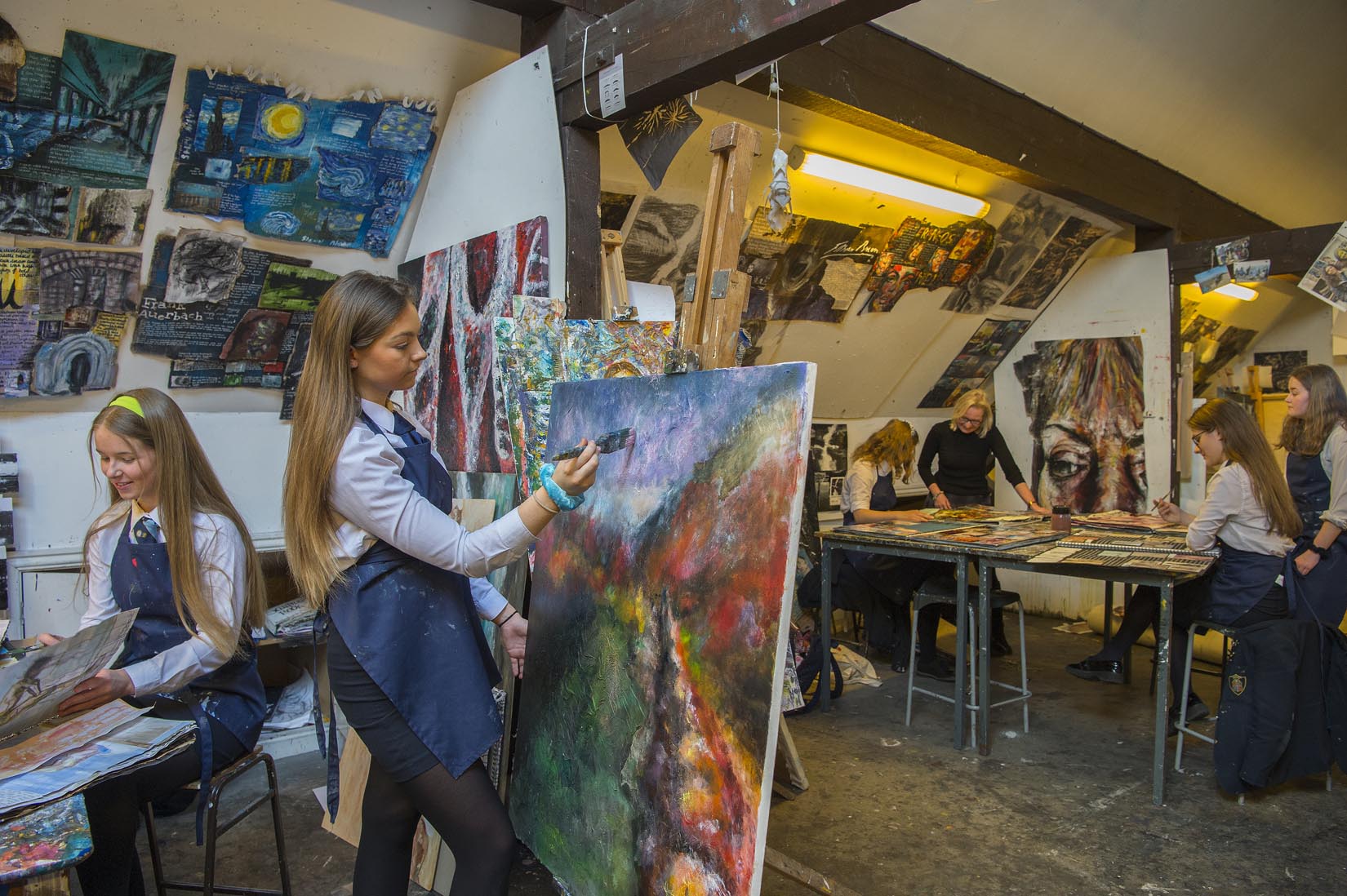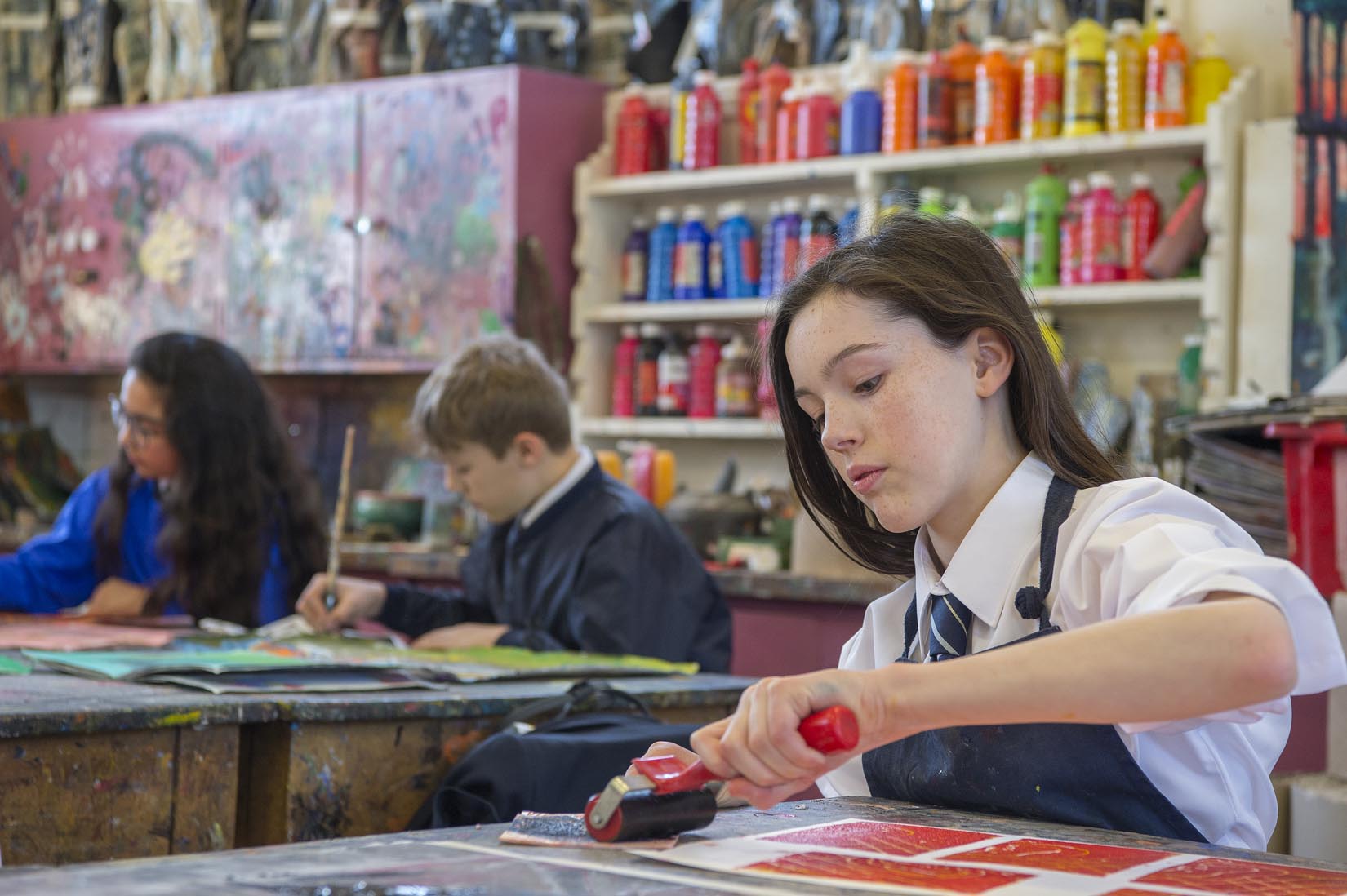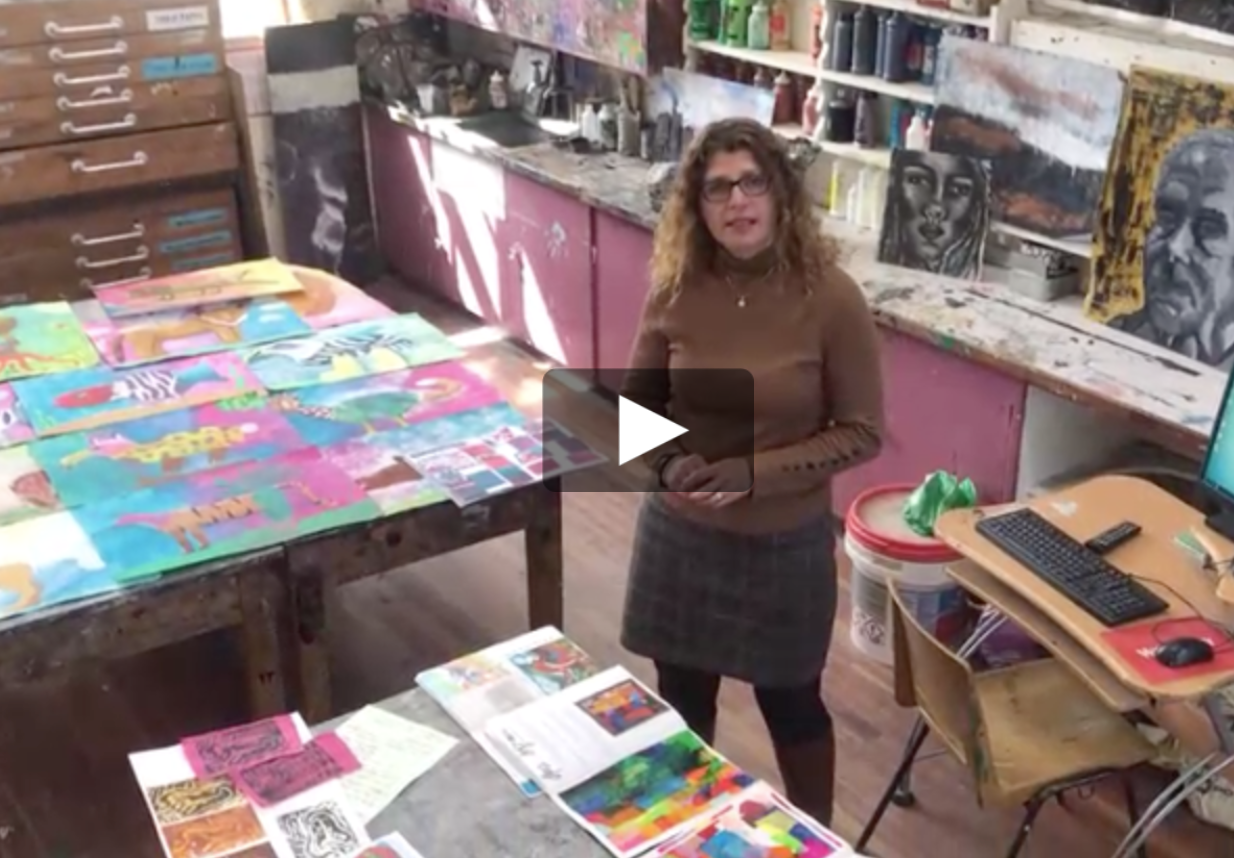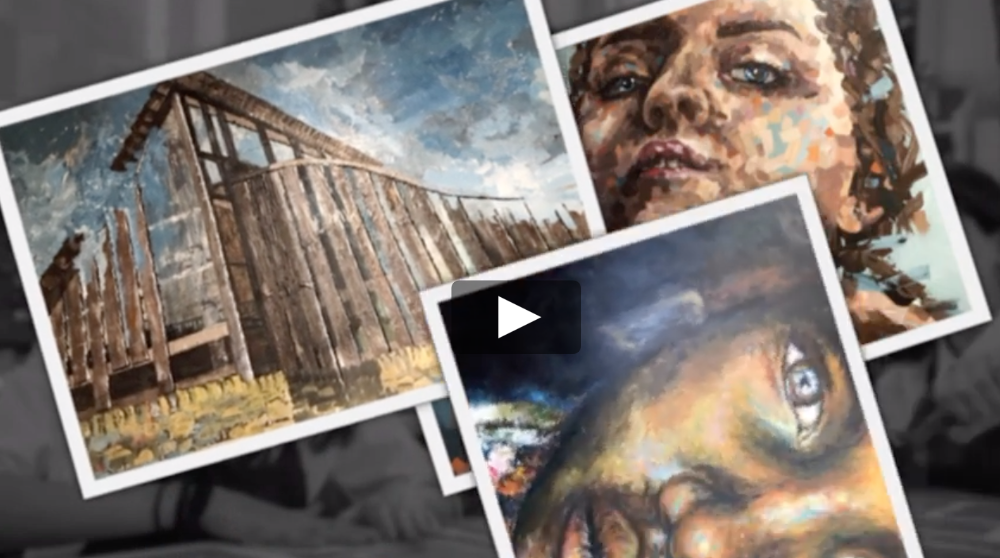- Academic
- Outstanding results
- Enhancing teaching and learning
- Departments
- Art
- Biology
- Business
- Chemistry
- Classics
- Design technology
- Economics
- English
- Geography
- History
- ICT
- Mathematics
- Modern foreign languages
- Music
- PE
- Physics
- Plus One Programme
- Politics
- PSHCEe
- Psychology
- Religious Studies
- Main library
- Careers
- Careers education
- Careers guidance
- Careers information
- Higher education
- School leaver employment
- Studying abroad
- Taking a gap year
- Work experience
Art
Head of Department
Mrs F Henson
Teaching staff
Ms S Howe
Mrs K Hawthorne
Contact Us
Use the form below to contact us directly.
Art
Visit our online gallery here:
Our passion for art encourages all students to express themselves

In the art department at Ripon Grammar School we aim to provide a stimulating, broad based curriculum geared towards the confident and aspiring artist as well as the less assured. In providing a wide range of experiences, we aim to open up art to all of our students, catering for all interests, disciplines and abilities. Mrs Henson, the current head of department, and two art teachers work in the department as subject specialists. Art is a great strength and allows students to benefit from a vast wealth of knowledge and experience.
Over the years students may explore - in addition to the more traditional curriculum of drawing and painting - printmaking, ceramics, sculpture, surfaces and texture. The curriculum framework allows for adaptations in the expression of particular disciplines, responding to the needs and interests of students as well as the influences of what is happening in the art world and the world around us. Our curriculum is devised so students tackle projects which are challenging and which build on previous learning, knowledge and experience. We aim to provide an environment where all students feel valued for the work they produce and for their thoughts and opinions on artistic endeavour. We pride ourselves on building confident learners who have assurance in the practical expression of their ideas, and who are able to express themselves in 2 and 3 dimensions as well as to evaluate it verbally; pupils who are prepared to take risks and meet the challenges of large scale pieces using a variety of media.

We aim to:
- Ensure that students have an opportunity to explore ideas, feelings and meanings
- Ensure each student has the opportunity to realise their potential and make the most of their strengths
- Provide an environment where students find the creative process enjoyable and rewarding
- Develop the capacity for creative thought and action; the ability to innovate, initiate and make effective personal responses
- Develop a 'language' that allows each student to express themselves in visual terms and communicate ideas
- Ensure tolerance of others and respect for ideas and opinions
- Develop an understanding of cultural change and difference
- Recognise and appreciate the richness and variety of art within other cultures
- Develop the ability to assess social, moral, ethical and aesthetic values through the practice and appreciation of art and design
- Develop social skills and understanding through participation in group projects and through shared experiences
- Develop, through art and design, discipline and insight to facilitate a better understanding of the world in which we live, locally and globally
- Develop perceptual skills and motor skills
- Develop the potential for further study through the use and understanding of visual and tactile media
- Develop the ability to record and analyse information
- Encourage research and investigation of ideas
- Introduce students to the work and achievements of artists and the cultural influences on their work
- Help students recognise how images and artefacts can be powerful and influence people's thoughts, ideas and beliefs
- Develop thinking skills and approaches to problem solving
"We're passionate about art," says Mrs Henson, who explains how students at RGS are encouraged to experiment with ideas and explore different techniques. "We want students to engage with the subject and enjoy themselves with us." Hear what else Mrs Henson has to say by clicking on the play button, below:
Summary of subject content
Lower school (KS3)
The department strongly believes that the work undertaken at KS3 is fundamental to students’ success at GCSE and A level.
Students are marked on the following criteria at KS3:
- Drawing from primary and secondary sources
- Collecting imagery
- Using visual language and appropriate media and techniques to undertake visual research
- Understanding and analysing the work of artists, designers and crafts people
- Understanding visual ideas, codes and conventions of western, contemporary, historical and non-western art
- Evaluating and refining their own ideas and their use of media and techniques
- Undertaking processes of developing ideas
- Consideration of media, materials and processes on 2D and 3D outcomes
- Experimenting, reviewing, refining and evaluating
- Quality of final outcome
In addition, risk taking is a key concept to the development of students' work, to produce images artefacts and final outcomes that demonstrate originality imagination and creativity.
First form – the foundation core concepts of visual language are taught in a range of exciting projects. We teach colour, form, space, pattern and application of paint. Our fantasy imaginary creatures project encourages creativity, bringing together all students’ learning. We conclude the year with 2 natural form clay projects that offer the opportunity to move into 3D.
Second form - visual concepts and techniques are further explored through differing approaches to the visualising of space. Form is explored from classical perspective to cubism. Linear perspective, mark making surfaces and textures are utilised throughout the year culminating in a large card sculpture and clay slab textured panels.
Third form - our focus is on the identity of the individual student, from their location and place in the world to portraiture. Students study a variety of materials and processes, ranging from recording, aboriginal mark making symbolic and metaphoric to western realism. This concludes with study of more expressive Expressionist approaches of the 20th century and the radical approaches of the cubists.
Upper school (KS4/GCSE)
GCSE art and design has been designed to encourage an adventurous and enquiring approach to the subject. Successful students should demonstrate an understanding of past and contemporary art and design practice and be able to produce artwork that embraces a range of ideas.
Students begin the course in fourth form, building confidence in recording key skills in the still life project. They utilise a broad range of exciting approaches to drawing, collage, painting, printmaking, etc. combined with critical studies of Van Gogh, Cezanne and Cubism in developing their own unique final outcomes. This project is complemented by a sculpture project, based on natural forms and the figure. The sculpture book and a visit to the Yorkshire Sculpture Park provide a vital foundation for development of ideas and critical understanding. An exciting range of processes are developed in mixed media and clay, culminating in a large final piece. The two projects represent the course work, which is 60% of the final mark (see below).
The course emphasises the process and core concepts of art and design: visual research, quality of recording, observation, use of critical study, and exploration and development of ideas and refinement of the final piece.
Key subject features aim to develop students’:
- Creative and imaginative ability and the practical skills for engaging with and for communicating and expressing original ideas, feelings and meanings in art, craft and design
- Investigative, analytical, experimental and interpretative capabilities, aesthetic understanding and critical and enquiring minds, with increasing independence
- Cultural knowledge and understanding of art, craft and design and of the media and technologies used in different times, contexts and societies
- Personal attributes including self-confidence, resilience, perseverance, self-discipline and commitment.
Assessment:
Unit 1: personal portfolio in art and design is weighted at 60 per cent of the course
Unit 2: externally set assignment in art and design is weighted at 40 per cent of the course.
In February of the fifth form students are given the examination theme at the start of a preparatory period of 6 school weeks in which they must prepare and develop a personal response, with the support of their teachers, which is then completed in a 10 hour examination utilising skills and understanding from the coursework. The examination may be arranged at the discretion and convenience of school. It can be over 2 days or a longer period of time but must enable candidates to have periods of sustained activity where they work under examination conditions. Candidates should take their preparatory studies and any materials and objects required, into the examination.
Exam board:
Edexcel GCSE art and design
Lower and upper sixth
The range of concepts, techniques, materials and strategies looked at develop knowledge and understanding beyond GCSE level. Students utilise a range of strategies based upon the work of Ben Nicholson and Peter Lanyon and find their own artistic sensitivities, and develop own final pieces using personal strategies. We develop work in 2D, painting and collage etc. and 3D sculpture in mixed media and clay. This represents the course work.
The A Level course is weighted 60% coursework and 40% exam and there is emphasis placed on a 3,000 word essay which is run in conjunction with an annotated sketch book.
Students select artists, pieces and imagery personal to them. Students undertake a structured analysis through a work journal that unwraps each core visual concept in terms of studies analysis and interpretation. Students carry out visual research relating to their own emerging theme based on arts seen in the city, from Impressionism to Modernism, Abstraction and Cubism.
Exam board:
Edexcel Art and Design
Exam results:
The art department’s results at both GCSE and A level are extremely strong, reflecting the expertise and passion shown by the art team. We have high expectations of our students and their results reflect this.
Study trips:
We run two study visits at GCSE to ensure that all students meet assessment objectives effectively.
Fourth form students go to the Yorkshire Sculpture Park to support their sculpture project and resource their sculpture books.
The trip for fifth form students responds to the Edexcel GCSE exam question. It enables every student to have suitable and inspiring resource material to work from and ensures they can achieve and aspire to the highest grades. In 2014, for the exam question ‘similarities and differences’, students visited Redcar beach, Newcastle and Baltic in order to respond to the question.
As art history is an integral component of the A level course, we run a study visit to Paris to ensure students are supported with the essay and annotated sketchbook aspect of the syllabus.
Career opportunities:
Our students have used their art and design skills in a wide variety of career choices; being creative can support and enhance any career option. Career paths taken by our A level students include:
reconstructive plastic surgery, medicine, dentistry, veterinary science, law, architecture, pharmacy, business studies and computer science
The website https://nationalcareersservice.direct.gov.uk is a useful source of career option ideas.
What our students say:
“I like art because it allows me to be inspired by different cultures and express my feelings through creating a piece." - Liv
“Art is inspiring, as it helps with my creativity. It allows my imagination to run wild.” - Clemmie
“I like the range of different techniques we do in the lesson, for example clay, paint and chalk. I like the art teachers because they are really approachable and help with my work.” - Amy
“I love doing art, it is by far one of my favourite subjects. The variety of media that we use keeps your attention, as well as letting you try new things. The teachers are the best.” - Tom
“In the first year I would never have expected to take art but because of the art teachers encouraging me to pursue it I have started to realise my potential as an art student, and I have loved every minute.” - Tom
“I was not very confident when I started at Ripon Grammar School. But over the years I have learned to express myself, and the more I did the more I loved it. That’s why I took art at GCSE.” - Jack








